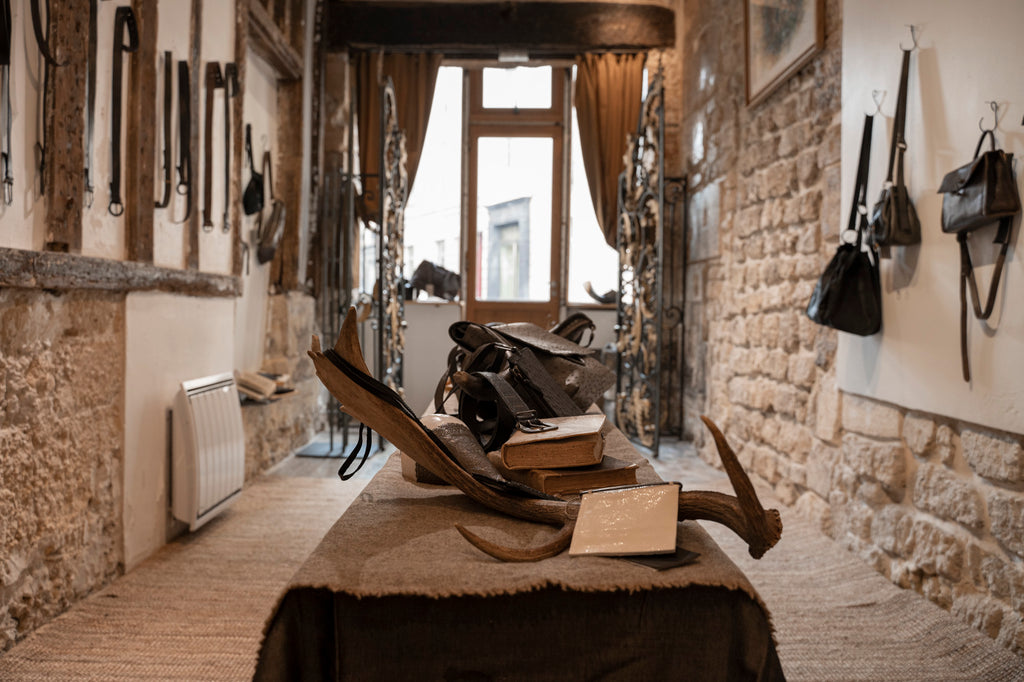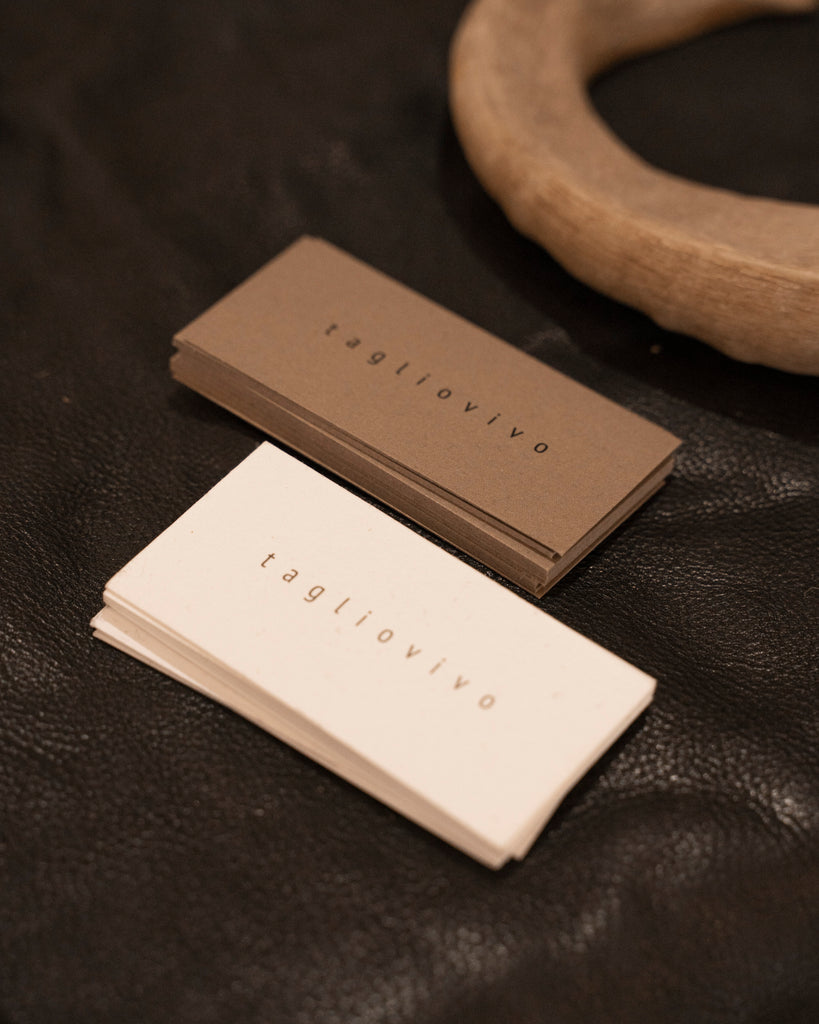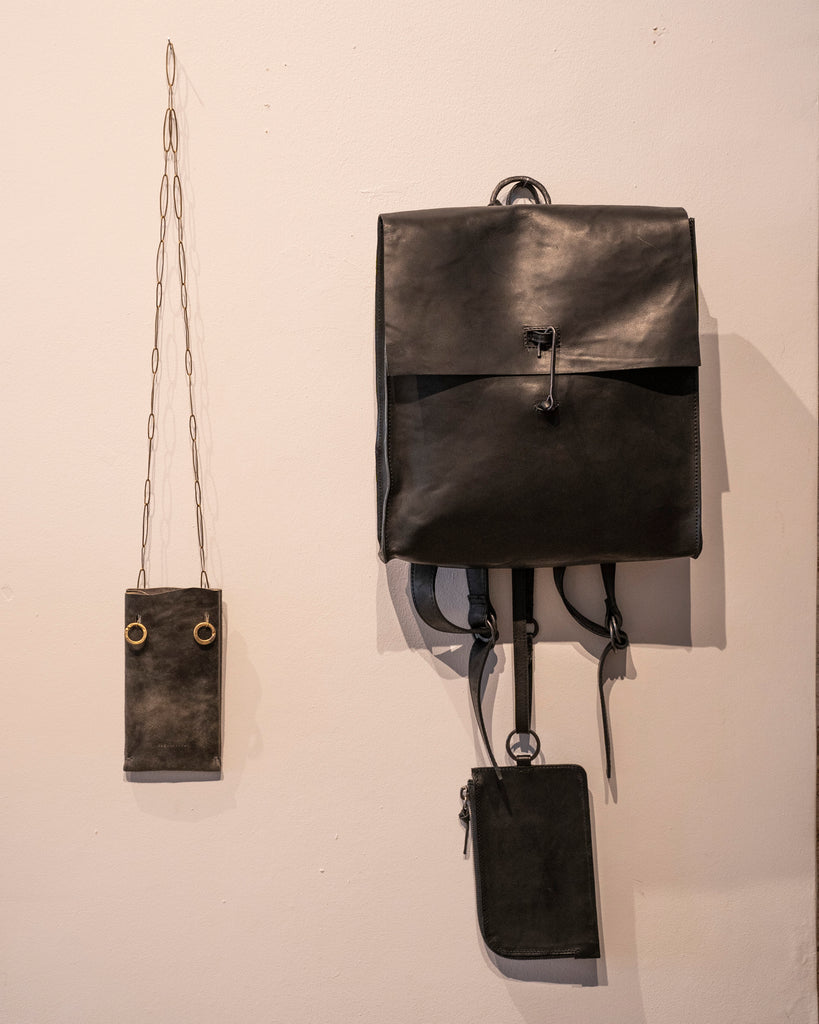TAGLIOVIVO INTERVIEW - TALKING WITH GIORDANO LAPEGNA

Tagliovivo interview
Tagliovivo is an artisanal bag label that stands out for its commitment to traditional craftsmanship and the use of raw materials of the highest quality. During Paris Fashion Week RTW FW23, we were visiting Giordano - founder of Tagliovivo - in their showroom for an interview on Tagliovivo, the way of crafting and the latest collection.

The start of Tagliovivo
LCM: We have been following your career for a number of years and we know that you founded Tagliovivo in 2012. How did you start?
Giordano: Unofficially, I founded Tagliovivo in 2010. In this time I did research on all the different types of leather, vegetable tanning, pattern making, hardware and sourcing up until 2012. Although leather work has been in our family for generations, the way I work with leather for Tagliovivo is completely different. I discovered this way of working with leather, ancient hand-made hardware and vegetable tanning in 2009. The two years that I took to study were very important to establish the foundation of Tagliovivo. Then officially, Tagliovivo launched in late 2012 and the first collection was shown in the winter of 2013. It consisted of 10 different pieces, each with their own unique element.

LCM: Can you explain the meaning behind Tagliovivo?
Giordano: Tagliovivo means raw edge, and stands for the raw cut of leather. In Italian it is separated into two words, Taglio Vivo. I put together the two words as a single word, and that’s how Tagliovivo was born. Tagliovivo stands for the raw look, we propose the rawness of the skin of the leather and we appreciate the original and natural look of leather. And although our brand has evolved over the past 10 years, where we have proposed different types of leathers and polished looks. The brand ethos, idea and concept still breathes through all our pieces. Leather was the skin of an animal and with Tagliovivo we don’t want to hide its previous life. The aging of the leather is what makes Tagliovivo attractive, revealing the signs of time as the expression of naturalness and truth. We believe in preserving the natural features of the leather, including the marks, scars and signs that are visible on the bags, as a form of respect for the animal's life. It is a reflection of life, things don’t run smoothly all the time.

LCM: With regards to the leather, you mentioned you are using only vegetable tanned leathers. Are you also involved with the actual tanning process yourself?
Giordano: We started working with a new tannery in Tuscany. Tuscany is known for their history in vegetable tanning and with our tannery we are able to customize our leathers in the way that we want. With this process, we are very involved in creating the outcome. Apart from this, we have introduced our hand-dye series in 2018. This series contains colors and shades that are created by hand in our studio in Puglia and for each new season we introduce 3 to 4 new colors.
LCM: Could you explain the characteristics of Tagliovivo's style?
Giordano: What we like to aim for is to have a simplistic and clean look, in fact we don’t consider Tagliovivo as a dark brand. Our clients are very different from a retailer in Japan selling m.a+ or Layer-0 to a Califorinean shop selling colorful womenswear. This is what we like to do, we don’t want to be in one segment, because of our artisanal approach to bag making.

Handmade Hardware
LCM: Let’s talk about the hardware, as it is something that we are very passionate about. Where did you get the inspiration to create this hardware? I have also read that it is ancient and dates back to 1300 BC. Can you please elaborate on this?
Giordano: The inspiration comes from chains dating indeed back to 1300 BC. They were used, together with a big hook on the end of the chain, to hang up the pot above the woodfire to cook. I found one chain and I really liked the look of it, so I started researching about the history and collected as many as I could find. At the moment we have quite a lot of stock on this, but we are still collecting them, as one day there will be no more left.
LCM: So all the bags that Tagliovivo makes have one of these ancient chains?
Giordano: Not specifically, we bring the chains to our blacksmith and he separates the rings and hooks from each other. The rings and hooks are used for the bags, but not all our bags have them, because they don’t come in all the sizes of our bags. However, all our bigger bags have them as the main element and closure. For the smaller bags, we worked together with a blacksmith to recreate the look of the ancient rings.



FW23/24 : WNDR
LCM: Your FW23 collection is named WNDR, what does it mean?
Giordano: So, let me tell you about Wunderkammer, it is also known as the Cabinet of Curiosities. It was a fascinating assortment of unique objects during the 16th century that included natural history specimens, artworks, and a wide range of other interesting unique and peculiar objects from all over the world. What's interesting is that early scientists and merchants had their own collections of curious objects, which only adds to the intrigue of these cabinets. In keeping with this curiosity, leather and tanning research played a critical role in the development of the WNDR collection.


LCM: Okay, so what new elements did you add to this collection?
Tagliovivo: Like I mentioned, the collection has an array of new hand-dyes, products and leathers. The new hand-dyes that we worked on are a shaded dark brown named Bark, a mix of green and gray named Algue, and a shaded black color named Abyss. The new leathers, apart from our standard Culatta, are Crocodile, Ostrich and Stringray and they are all from traceable sources.








